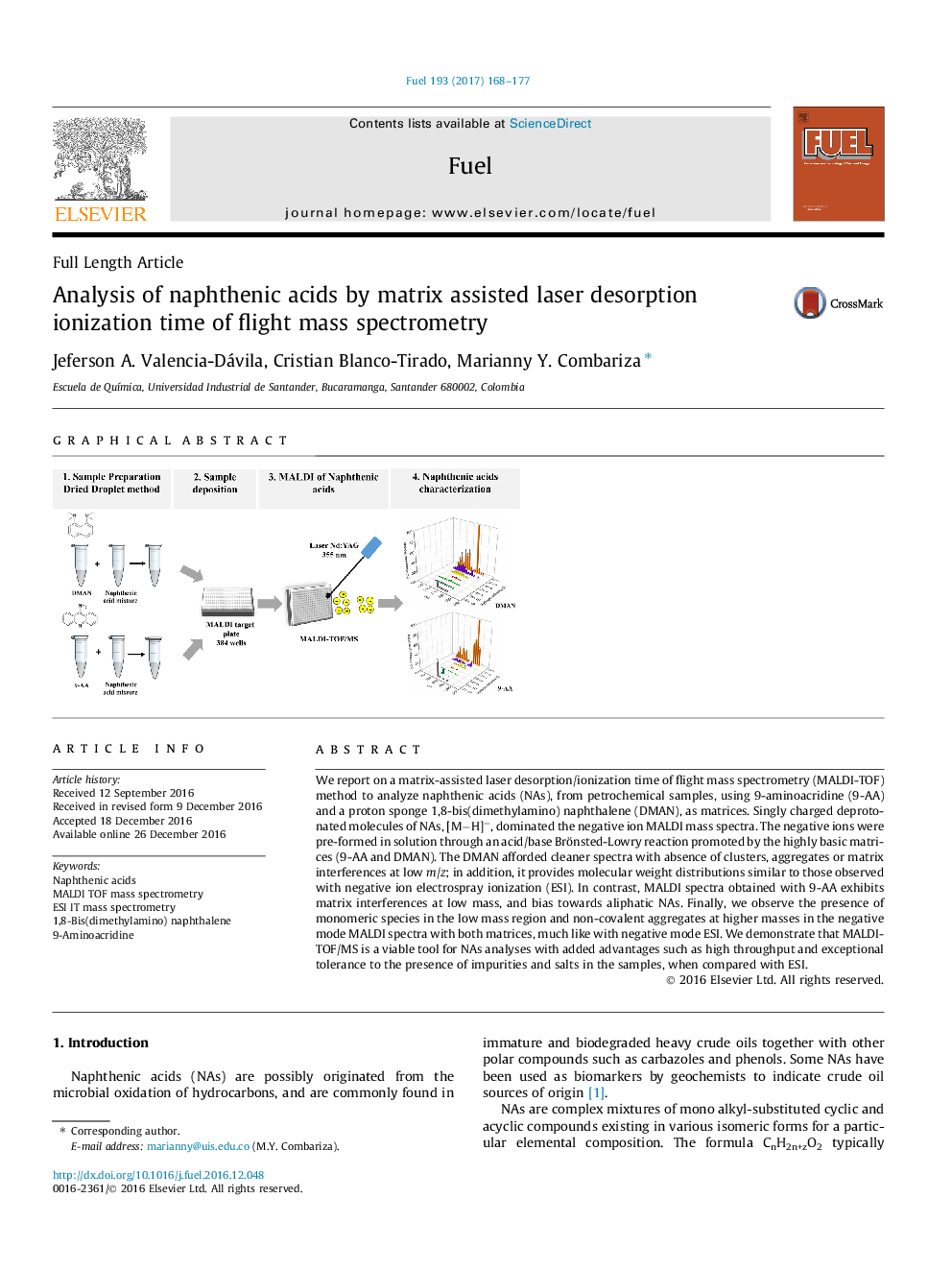| Article ID | Journal | Published Year | Pages | File Type |
|---|---|---|---|---|
| 6474911 | Fuel | 2017 | 10 Pages |
We report on a matrix-assisted laser desorption/ionization time of flight mass spectrometry (MALDI-TOF) method to analyze naphthenic acids (NAs), from petrochemical samples, using 9-aminoacridine (9-AA) and a proton sponge 1,8-bis(dimethylamino) naphthalene (DMAN), as matrices. Singly charged deprotonated molecules of NAs, [MâH]â, dominated the negative ion MALDI mass spectra. The negative ions were pre-formed in solution through an acid/base Brönsted-Lowry reaction promoted by the highly basic matrices (9-AA and DMAN). The DMAN afforded cleaner spectra with absence of clusters, aggregates or matrix interferences at low m/z; in addition, it provides molecular weight distributions similar to those observed with negative ion electrospray ionization (ESI). In contrast, MALDI spectra obtained with 9-AA exhibits matrix interferences at low mass, and bias towards aliphatic NAs. Finally, we observe the presence of monomeric species in the low mass region and non-covalent aggregates at higher masses in the negative mode MALDI spectra with both matrices, much like with negative mode ESI. We demonstrate that MALDI-TOF/MS is a viable tool for NAs analyses with added advantages such as high throughput and exceptional tolerance to the presence of impurities and salts in the samples, when compared with ESI.
Graphical abstractDownload high-res image (186KB)Download full-size image
